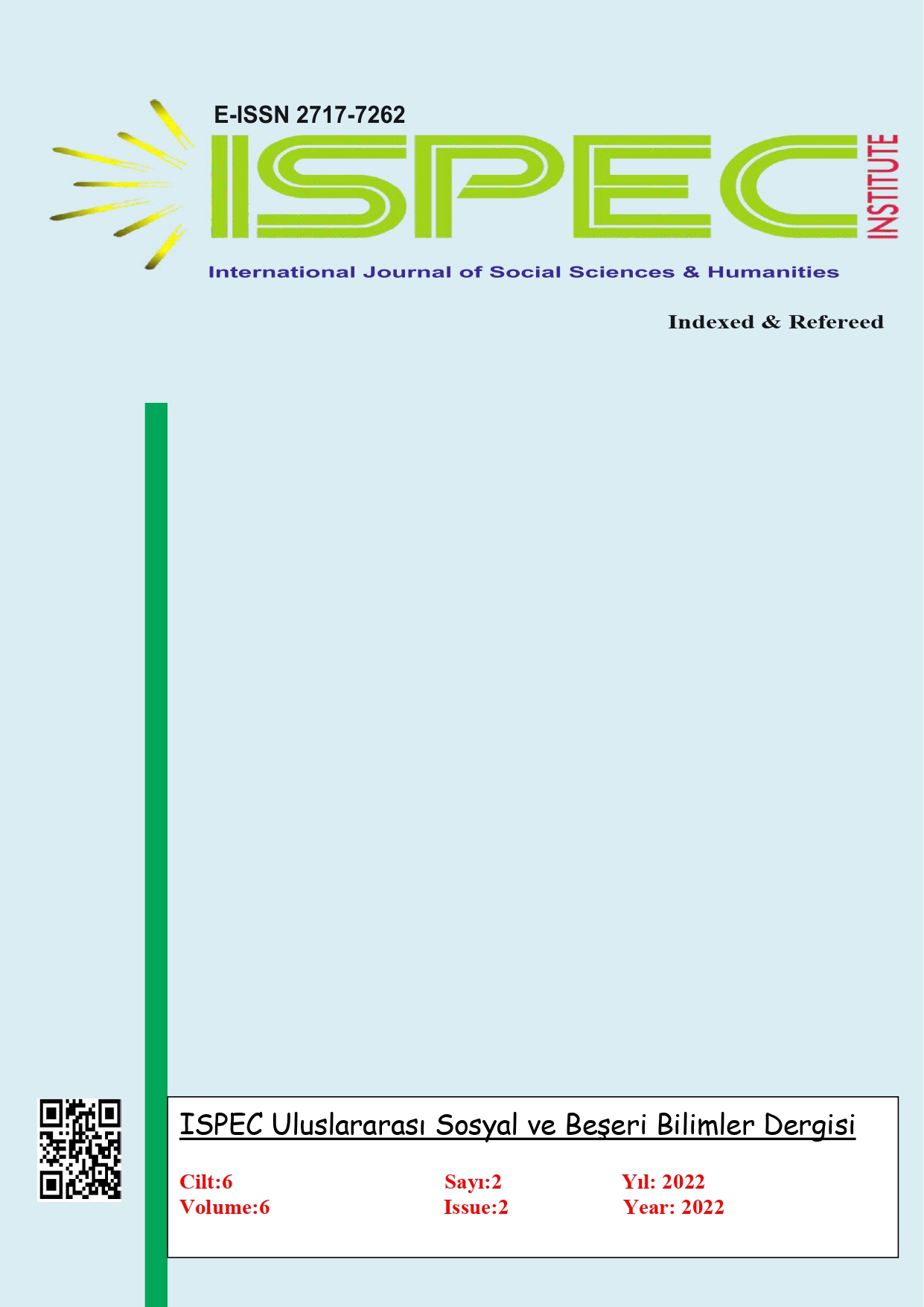Evaluation of The Readability of The Activities Prepared For The Subject Area of Living and Life in The Primary School 3rd Grade Science Book
DOI:
https://doi.org/10.5281/zenodo.7487670Keywords:
Science, Activity, Readability, TextbookAbstract
The aim of this study is to determine the readability levels of the activities in the primary school science books in Turkey. For this reason, in the research, one of the 3rd grade science books used in primary schools affiliated to the Ministry of National Education in the 2022-2023 academic year, accessed from the EBA (Education Informatics Network) page, Primary School Science 3 Textbook, was used. All of the 'How shall we do' activities of the 'Let's Do It Together' sections at the end of the chapters of two separate units prepared for the subject area of 'Living Things and Life' in the related book were evaluated in terms of readability. During the evaluations, the formulas of Ateşman (1997) and Bezirci and Yılmaz (2010) were used. As a result of the research, it was determined that the activities studied were above the class level addressed. Accordingly, it can be suggested that the readability of the activities planned for primary schools and included in the books should be reviewed and rearranged in accordance with the grade level.
References
Altun, A. (2013). Yapılandırmacı yaklaşım, sosyal bilgiler programları ve ders kitapları. B. Akbaba (ed.), Konu alanı ders kitabı inceleme kılavuzu sosyal bilgiler. Ankara: Pegem Akademi Yayıncılık.
Ateşman, E. (1997). Türkçede okunabilirliğin ölçülmesi. Ankara Üniversitesi TÖMER Dil Dergisi, 58, 71-74.
Aygün, M., & Hacıoğlu, Y. (2022). Ortaokul ve Lise Ders Kitaplarında Ses Konusundaki Metinlerin Okunabilirliği. Fen Bilimleri Öğretimi Dergisi, 10(1), 251-280.
Bernsten, H. (1985). Readability formulas: What they are, what they do to books and children. Basic Education, 29(6), 3.
Bezirci, B. & Yılmaz, A. E. (2010). Metinlerin okunabilirliğinin ölçülmesi üzerine bir yazılım kütüphanesi ve Türkçe için yeni bir okunabilirlik ölçütü. DEÜ Mühendislik Fakültesi Fen Bilimleri Dergisi, 12(3), 49-62. Erişim adresi: http://acikerisim.deu.edu.tr /xmlui/handle/12345/2470.
Chall, J.S. (1984). Readibility and prose comprehension: Continuities and discontinuities. In understanding reading comprehension. 233-246. Newark, Del.: International Reading Association.
Checkley, K. (1997). International math and science study calls for depth, not breadth. Education Update, 39(1).
Chiappetta, E. L., Sethna, G. H., & Fillman, D. A. (1993). Do middle school life science textbooks provide a balance of scientific literacy themes? Journal of Research in Science Teaching, 30(7), 787-797.
Çakıcı, Y. & Girgin, E. (2012). İlköğretim II. kademe fen ve teknoloji ders kitaplarındaki ünite sonu değerlendirme sorularının incelenmesi. Erzincan Üniversitesi Eğitim Fakültesi Dergisi, 14(2), 87-110.
Çelik, S., Şenocak, E., Bayrakçeken, S., Taşkesenligil, Y., & Doymuş, K. (2005). Aktİf öğrenme stratejİlerİ üzerİne bİr derleme çalişmasi. Atatürk Üniversitesi Kazım Karabekir Eğitim Fakültesi Dergisi, 11, 155-185.
Çepni, S., Gökdere, M., & Küçük, M. (2002). Adaptation of the readability formulas into the Turkish science textbooks. Energy Education Science and Technology, 10(1), 49-58.
Çepni, S. (2005). Kuramdan Uygulamaya: Fen ve Teknoloji Öğretimi. Pegem A Yayıncılık, Ankara.
Çetinkaya, G. (2010). Türkçe metinlerin okunabilirlik düzeylerinin tanımlanması ve sınıflandırılması. Doktora Tezi. Ankara: Ankara Üniversitesi Sosyal Bilimler Enstitüsü.
Davila, K., & Talanquer, V. (2010). Classifying end-of-chapter questions and problems for selected general chemistry textbooks used in the United States. Journal of Chemical Education, 87(1), 97 101.
Demir, T. (2013). Konu alanı ders kitabı inceleme kılavuzu sosyal bilgiler, İçinde; B. Akbaba (Ed.), Sosyal bilgiler ders kitaplarında dil ve anlatım. Pegem: Ankara, ss.105-144.
Demirbaş, M. (2007). İlköğretim 6. Sınıf Fen ve Teknoloji Ders Kitaplarının Belirli Değişkenler Bakımından İncelenmesi, D.Ü. Ziya Gökalp Eğitim Fakültesi Dergisi 9, 22-32.
Devetak, I., & Vogrine, J. (2013). The criteria for evaluating the quality of the science textbooks. In M. S. Khine (Ed.), Critical analysis of science textbooks (pp. 3-15). Dordrecht: Springer.
Dikmenli, M. (2010). An analysis of analogies used in secondary biology 98 textbooks: Case of Turkey. Eurasian Journal of Educational Sciences, 41, 73-90.
Göğüş, B. (1978). Orta dereceli okullarımızda Türkçe ve yazın eğitimi. Ankara: Kadıoğlu Matbaası.
Gözütok, F.D. (2017). Öğretim ilke ve yöntemleri. Ankara: Pegem Akademi Yayıncılık.
Güven, S. (2010). İlköğretim 6. Sınıf Fen ve Teknoloji Ders Kitabının Okunabilirliği ve Hedef Yaş Düzeyine Uygunluğu. Yüksek Lisans Tezi. Selçuk Üniversitesi, Fen Bilimleri Enstitüsü, Konya, Türkiye.
Hand, B., & Treagust, D. F. (1991). Student achievement and science curriculum development using a constructive framework. School Science and Mathematics, 91(4), 172-176.
Izgi, U., & Sezginsoy-Seker, B. (2012). Comparing different readability formulas on the examples of science-technology and social science textbooks. Procedia-Social and Behavioral Sciences, 46, 178-182.
Köseoğlu, F., Atasoy, B., Kavak, N., Akkuş, H., Budak, E., Tümay, H. & Taşdelen, U. (2003). Yapılandırmacı öğrenme ortamı için bir fen ders kitabi nasıl olmalı. Ankara: Asil Yayıncılık.
Krajcik, J.S., & Blumenfeld, P. (2006). Project-based learning. In Sawyer, R. K. (Ed.), The Cambridge handbook of the learning sciences. New York: Cambridge.
Küçükahmet, L. (2001). Ders kitabı inceleme kılavuzu, Nobel Yayın Dağıtım, 2. Bölüm, Syf: 13, Ankara.
Mikk, J. (2001). Prior knowledge of text content and values of text characteristics. Journal of Quantiative Linguistic, 8(1), 67.
Özbek, A. B., & Ergül, C. (2018). İlkokul 4. sınıf ders kitaplarının okunabilirliklerinin değerlendirilmesi. Mersin Üniversitesi Eğitim Fakültesi Dergisi, 14(2), 653-668.
Özmen, H. (2004). Fen öğretiminde öğrenme teorileri ve teknoloji destekli yapılandırmacı (constructivist) öğrenme. The Turkish Online Journal of Educational Technology, 3(1), 100-111.
Shelley, M. C., & Schuh, J. H. (2001). Are the best higher education journals really the best? A meta-analysis of writing quality and readability. Journal of Scholarly Publishing, 33(1), 11–22.
Şaşan, H. H. (2002). Yapılandırmacı Öğrenme. Yaşadıkça Eğitim Dergisi , 74-75, 49-52.
Talim Terbiye Kurulu Başkanlığı [TTKB] Ders Kitapları ve Öğretim Materyalleri Daire Başkanlığı. (2021). Ders kitaplarında okunabilirlik. Ankara: Millî Eğitim Bakanlığı.
Tatar N. & Kuru, M. (2006). Fen eğitiminde araştırmaya dayalı öğrenme yaklaşımının akademik başarıya etkisi. Hacettepe Üniversitesi Eğitim Fakültesi Dergisi, 31, 147-158.
Zorbaz, K. Z. (2007). Türkçe ders kitaplarındaki masalların kelime- cümle uzunlukları ve okunabilirlik düzeyleri üzerine bir değerlendirme. Eğitimde Kuram ve Uygulama, 3(1), 87-101.
Downloads
Published
How to Cite
Issue
Section
License
Copyright (c) 2022 ISPEC International Journal of Social Sciences & Humanities

This work is licensed under a Creative Commons Attribution-NonCommercial-NoDerivatives 4.0 International License.






